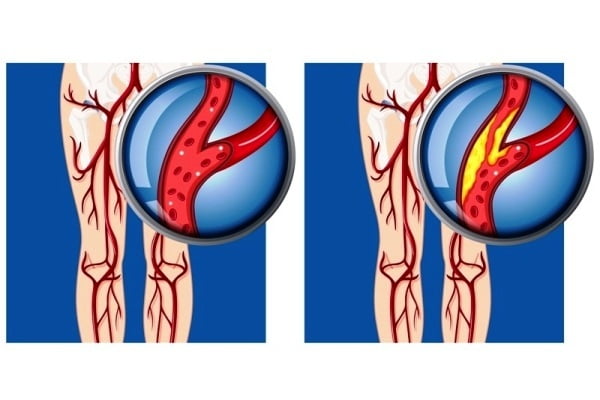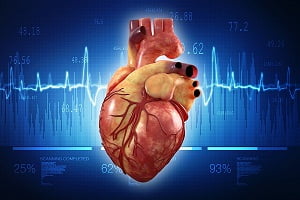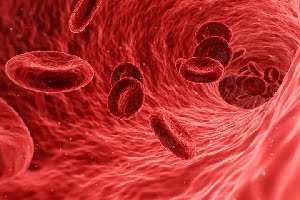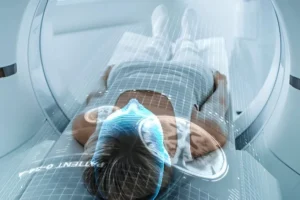Artery in Leg: Type, Blocked Artery, Vascular Problems
- Updated on: Jul 24, 2024
- 3 min Read
- Published on Nov 5, 2018


Artery and its function
Arteries are blood vessels, elastic in nature, whose function is to deliver oxygen-rich blood from the heart to the tissues of the body. Aorta is the largest artery which arises from left ventricle of the heart and further divides and reaches to the legs.
Common arterial diseases are atherosclerosis, stenosis of the arteries, peripheral artery disease, coronary artery disease, etc.
Main artery in leg
The main artery in leg is known as femoral artery. Its function is to deliver oxygenated blood to the tissues of the leg. Femoral artery passes through the deep tissues of the thigh region (also known as femoral region) of the leg parallel to the femur (down to the tips of the toes). It is classified as an elastic artery due to the presence of numerous elastic fibers which promote stretching in response to blood pressure.
Check out graphics on Peripheral Artery Disease.
Some other arteries in leg
Other arteries in leg are popliteal artery, anterior tibial artery, posterior tibial artery, fibular (peroneal) artery, etc.
The popliteal artery descends down the posterior thigh and gives rise to genicular branches. This artery supplies blood to the knee, thigh, and calf. Popliteal artery terminates or divides at the lower end into the anterior tibial artery and the tibioperoneal trunk.
Anterior tibial artery runs down the entire length of the leg, and into the foot (from the back of the knee). The tibioperoneal trunk is divided into:
- Posterior tibial artery – It continues down carrying oxygenated blood to and enters the sole of the foot.
- Fibular (peroneal) artery – It descends posterior to the fibula and gives rise to perforating branches which penetrate the inter-muscular septum (that separates lateral from the anterior compartment of leg). Fibular artery supplies blood to the outside and back of the ankle and calf muscles and ends at the lateral calcaneal artery.
More: Human Heart: Anatomy, Location, Function
More: Claudication Pain: Symptoms, Causes, Diagnosis, Treatment
Arteries in foot
The posterior tibial artery enters the sole of the foot through the tarsal tunnel and divides into plantar arteries. The plantar artery extends across the foot and down through each toe where it unites with the dorsalis pedis artery.
The function of dorsalis pedis artery is to supply blood to the surface of the foot as a continuation of the anterior tibial artery.
What happens if an artery in leg is blocked?
The main cause of blockage in an artery is atherosclerosis. Atherosclerosis leads to the formation of plaque in an artery which stops or hinders the flow of blood. If the flow of the blood is blocked in the leg, it leads to numbness and weakness, painful cramping after walking or climbing stairs (called claudication), coldness in lower leg or foot, sores on toes, feet or legs which do not heal, change in color of legs, etc. If the blockage occurs in the femoral artery, bypass surgery or angioplasty is recommended.
Peripheral artery disease is also a common circulatory problem in which narrowed arteries reduce the flow of blood to the heart and brain, as well as legs. Peripheral vascular disease is another commonly used term to refer to peripheral artery disease. Other vascular problems in legs that can cause blocked artery in leg are such as vasculitis, injury to blood vessels, blood-clotting disorders, damage to blood vessels, etc.
Critical limb ischemia is a complication of blockage in limb artery. In this condition, open sores, injury, or an infection of feet or legs do not heal. When injuries or infections in leg advance, it results in tissue death (gangrene or ulceration) due to ischemia. In some cases, it is very critical and leads to the removal of the affected limb.
Treatment for blocked artery in leg
Some common measures to prevent blocked artery in leg are:
- Reduce or quit smoking and alcohol consumption
- Regular physical activity and losing weight (to lower the cholesterol in blood)
- Use of medicines such as aspirin and/or clopidogrel (Plavix and generic) to prevent blood clots or anti-hypertensives to reduce high blood pressure or hypertension (as prescribed by the doctor)
- Statins are medicines to reduce the production of LDL cholesterol (by liver).
- Eat healthy diet
Surgical methods to treat blockage in leg artery
For severe arterial blockage in legs (peripheral artery disease), angioplasty (ballooning) and stenting, atherectomy (keyhole plaque removal), endarterectomy (plaque removal), bypass surgery, etc are recommended treatments to restore the flow of blood.












